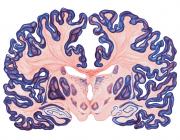Attentional control of the processing of neural and emotional stimuli.
Publication Year
2002
Type
Journal Article
Abstract
A typical scene contains many different objects that compete for neural representation due to the limited processing capacity of the visual system. At the neural level, competition among multiple stimuli is evidenced by the mutual suppression of their visually evoked responses and occurs most strongly at the level of the receptive field. The competition among multiple objects can be biased by both bottom-up sensory-driven mechanisms and top-down influences, such as selective attention. Functional brain imaging studies reveal that biasing signals due to selective attention can modulate neural activity in visual cortex not only in the presence but also in the absence of visual stimulation. Although the competition among stimuli for representation is ultimately resolved within visual cortex, the source of top-down biasing signals likely derives from a distributed network of areas in frontal and parietal cortex. Competition suggests that once attentional resources are depleted, no further processing is possible. Yet, existing data suggest that emotional stimuli activate brain regions "automatically," largely immune from attentional control. We tested the alternative possibility, namely, that the neural processing of stimuli with emotional content is not automatic and instead requires some degree of attention. Our results revealed that, contrary to the prevailing view, all brain regions responding differentially to emotional faces, including the amygdala, did so only when sufficient attentional resources were available to process the faces. Thus, similar to the processing of other stimulus categories, the processing of facial expression is under top-down control.
Keywords
Journal
Brain Res Cogn Brain Res
Volume
15
Pages
31-45
Date Published
12/2002
ISSN Number
0926-6410
Alternate Journal
Brain Res Cogn Brain Res
PMID
12433381

